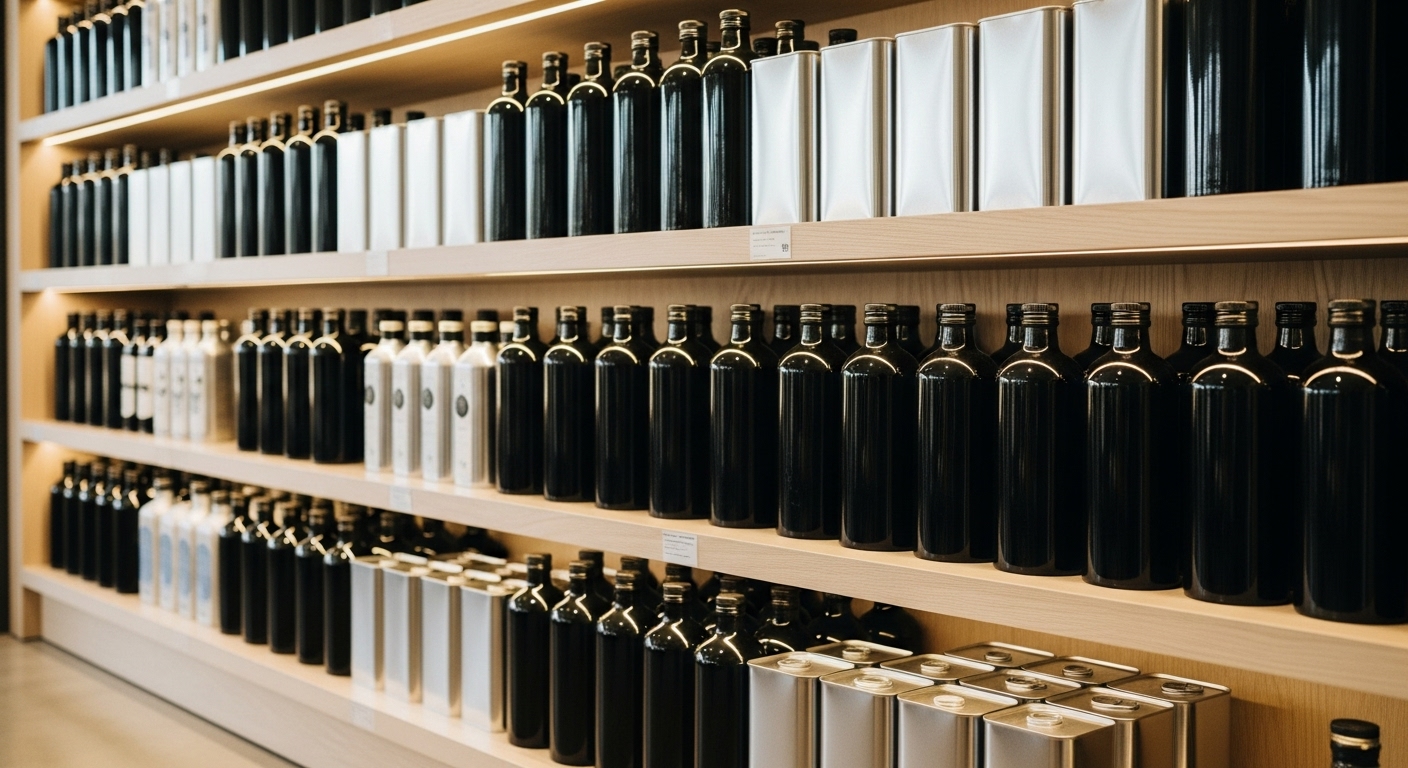Olive oil, one of nature’s most precious gifts, is a delicate liquid that can quickly lose its quality if not stored properly. For this reason, throughout history, producing olive oil has been only part of the story—storing and presenting it has evolved into a culture of its own. Societies that value olive oil have developed meticulous methods to preserve it while never neglecting its aesthetic appeal. Behind today’s elegant bottles lies a thousands-year-old tradition of preservation and a refined sense of visual sophistication.
From Ancient Vessels to Modern Designs
The earliest clues to olive oil storage are found in the amphorae, ceramic jars, and metal containers used by ancient civilizations. In ancient Greece and Rome, olive oil was stored in cool, shaded areas, often in earthenware vessels. These containers kept the oil’s temperature stable and protected it from external elements. Moreover, many of these vessels, adorned with intricate designs, became works of art in their own right, demonstrating that olive oil was not just a food but a carrier of aesthetic value.
Proper Storage: The Key to Preserving Flavor
The primary goal of storing olive oil is to preserve its beneficial components and unique aroma without degradation. Three main factors must be considered: light, heat, and air.
- Light, especially UV rays, accelerates the oxidation of olive oil. This is why dark-colored glass bottles are preferred over transparent ones.
- Heat can alter the structure of olive oil. The ideal storage temperature is between 15-22°C. Excessive heat or cold affects both the flavor and chemical composition.
- Air enters the bottle each time it is opened, introducing oxygen that gradually reduces the oil’s freshness. Airtight, leak-proof caps are therefore essential.
Bottling: From Functionality to Elegance
Today, bottling olive oil is as much about presentation as it is about preservation. It is not merely a practical necessity but a reflection of a brand’s identity, the oil’s quality, and the connection forged with the consumer. Minimalist glass bottles, retro tin cans, ceramic decanters, and modern packaging made from sustainable materials—each embodies a distinct aesthetic. Bottle design now encompasses not only visual appeal but also functionality, ergonomics, and environmental consciousness. Brands emphasizing the natural essence of olive oil often opt for simple, eco-friendly packaging, showcasing both aesthetic and ethical values.
The Language of the Bottle: The Character of Olive Oil
Some bottles, the moment you hold them, convey the delicate, fruity, and balanced character of the oil inside. Others, through their label, typeface, or the texture of the cap, hint at a robust, bold, and intense flavor. Much like wine bottles, olive oil bottles carry a message. Storing olive oil is thus not just a technical matter but a form of cultural expression. The bottle holds not only the oil but also the roots of the tree, the scent of the soil, and the story of the labor behind it.
Aesthetics and Meaning at the Table
Today, many people seek to bring not only flavor but also elegance to their tables. The olive oil bottle is no longer a forgotten detail tucked away in a corner; it has become a central visual element of the dining experience. A carefully designed bottle complements the spirit of the meal while fostering an emotional connection between the consumer and the brand. Just as preserving olive oil’s quality through proper storage is crucial, how we present that oil is equally significant. The culture of bottling serves as both a preservation tool and a refined expression of our respect for olive oil. When you hold an olive oil bottle, remember that it is not just a container but a continuation of a millennia-old tradition of storage and aesthetic sensibility.




